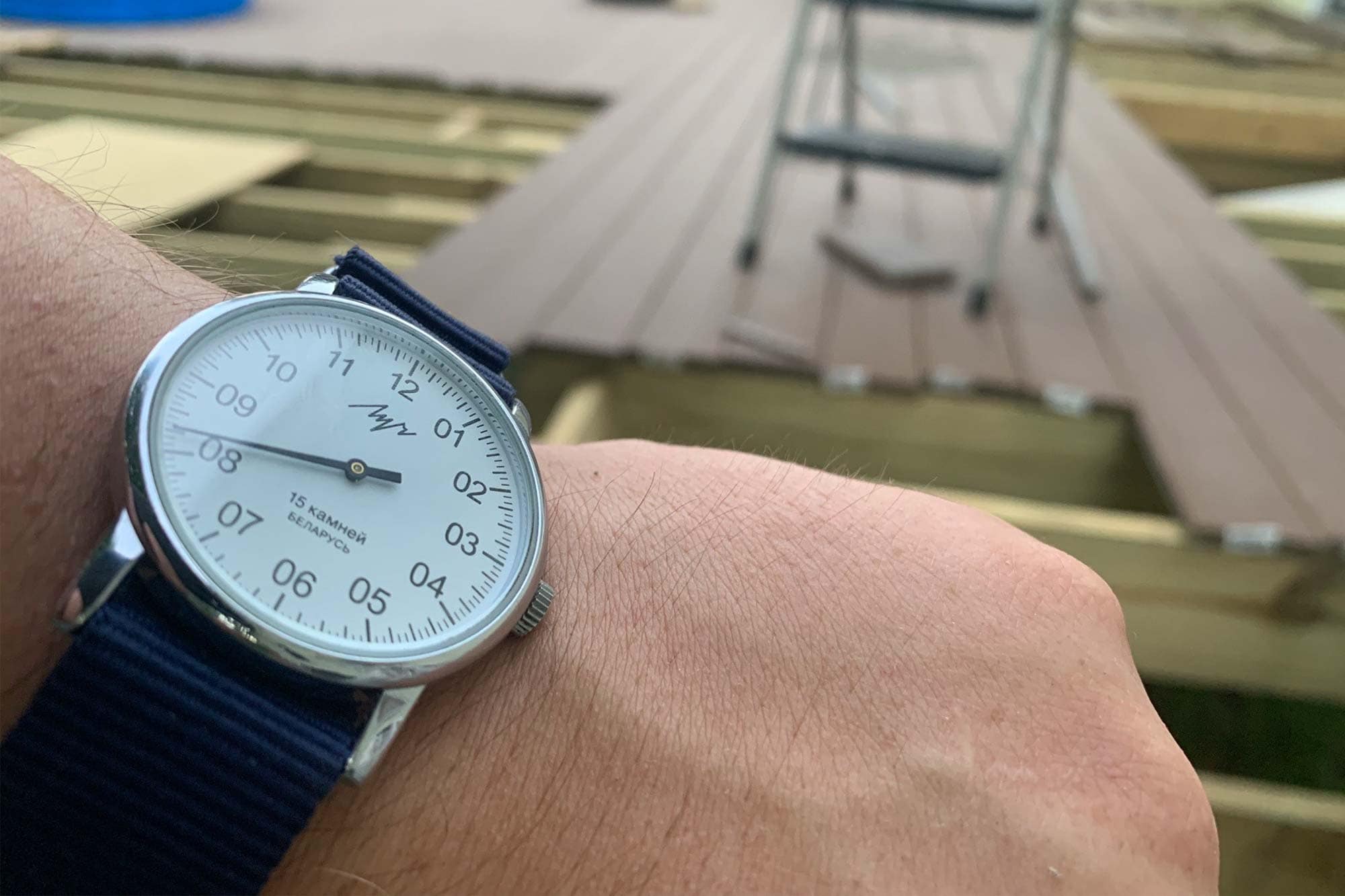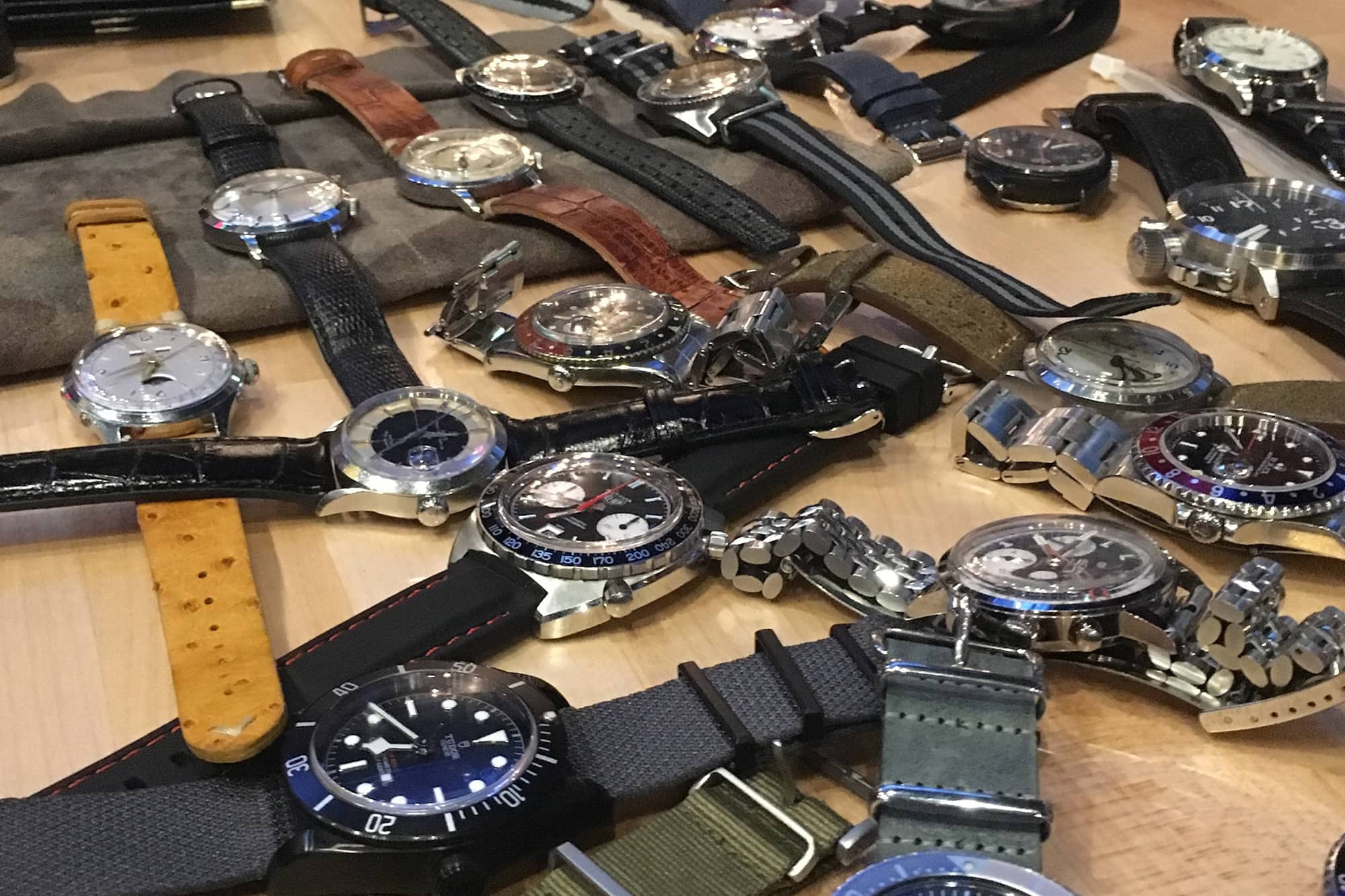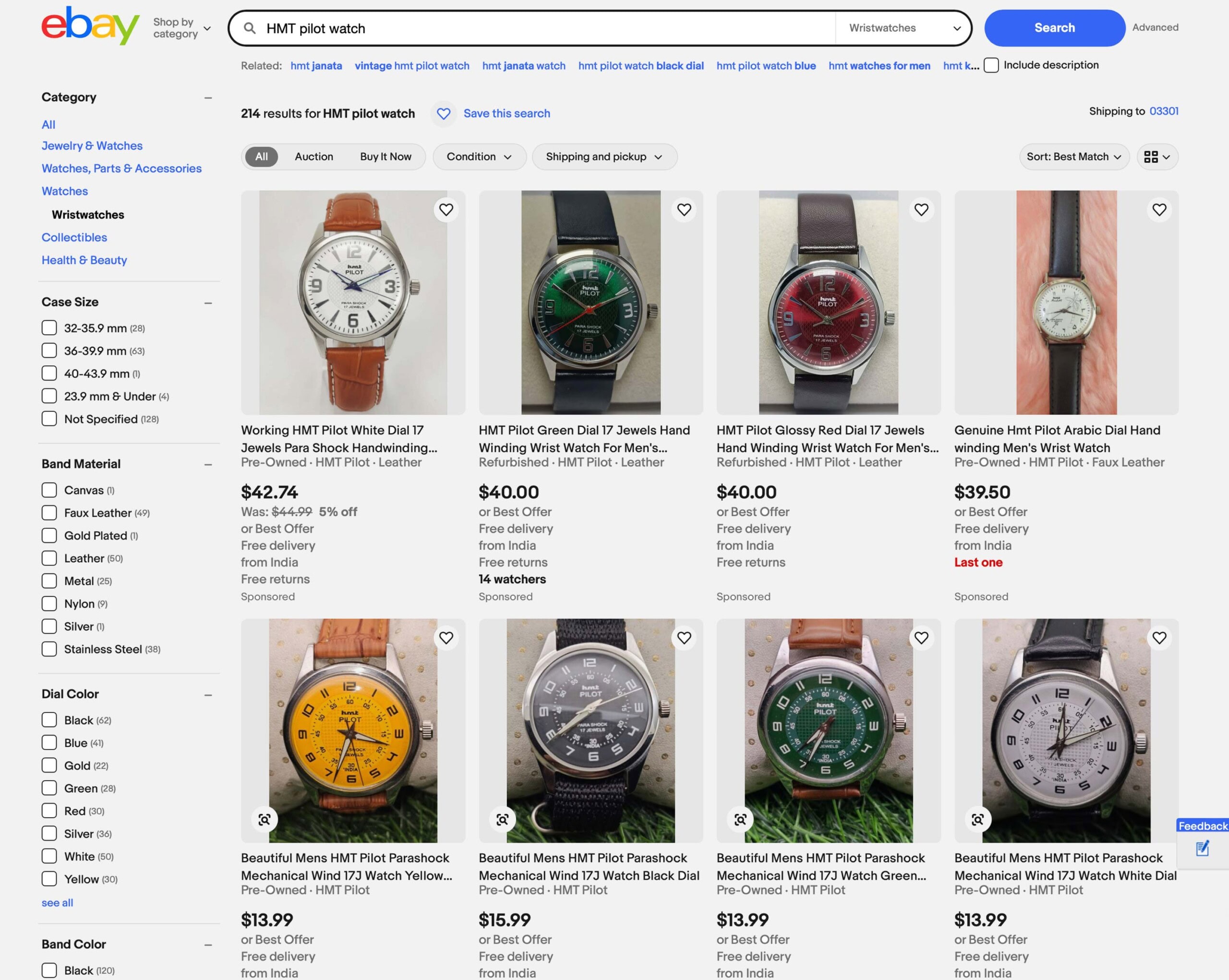I attended my first watch meetup with a generic quartz dress watch on my wrist and two budget mechanical watches stuffed into my pockets. In my right pocket was a one hand Luch, a watch that was as quirky as it was inexpensive (I think I paid $50 on Amazon, a lot for me at the time), thanks to a single hand that worked its way around a 12 hour dial about twice per day. I say “about” because it wasn’t very accurate, but I didn’t care. I’d spent hours researching my first mechanical watch before spending my hard earned cash, and was genuinely proud to own it. My left pocket housed a broken HMT Pilot, a watch that unlike the Luch that had been purchased out of pure enthusiasm, I knew little about. Of course, it wasn’t broken when I’d bought it, and the debate of whether or not it even belonged in my pocket at all was one that had caused me considerable stress in the hours leading up to the meetup.
As a pandemic era watch enthusiast, I cut my horological teeth behind the safety of my phone screen. Like bowling with bumpers, the internet spoon fed me confidence in a secure environment, letting me compose painstakingly researched opinions into carefully curated comments before posting anonymously on a forum. And, if that comment received criticism, this informative and safe environment allowed me to make it disappear forever with a single click. But as the pandemic fizzled out and restrictions were lifted, the watch community I’d become a part of through various usernames on a handful of platforms suddenly existed in the real world. To my delight and horror, I was invited to attend my first in person meetup through a local group of collectors. The opportunity to actually handle real watches was a dream come true for someone with budding enthusiasm that had never actually rotated a bezel or engaged a chronograph, but the idea of talking with real people in real time was terrifying. At the core of my trepidation was the fear that I’d turn into a babbling idiot while having my first watch conversation that wasn’t typed out from the safety of my bathroom.
Though I hadn’t yet identified my hesitation as imposter syndrome, looking back, this is exactly what it was. Of course, the common physiological phenomenon of feeling like a fraud is not limited to horological feelings of inadequacy, but it’s easy to see how a hobby with limitless rabbit holes that is ripe with experts could make a newbie feel… well, like a newbie. As the watch meetup approached, I questioned if I was even a “real” enthusiast. Afterall, I only owned two (very affordable) watches.
To combat this self doubt, I decided that adding a third watch to my lineup would make it a proper collection and, as a result, qualify me as a “real” enthusiast worthy of talking shop with other real enthusiasts. Broke as a joke but having discerned that pilot watches were considered cool, I hastily purchased a $20 bright red HMT Pilot directly from India that eBay assured me would arrive before the big day. Any seasoned collector reading that last sentence can guess what happened next, but as an unseasoned collector, I had yet to encounter the adage “if the deal is too good to be true, it probably is”, and I certainly wasn’t aware that dazzling fresh dials paired with weathered cases were a red flag. And so, I was caught off guard when my bright red watch stopped ticking and refused to wind shortly after arriving (I later opened up the caseback and discovered an excessive amount of oil and visible chunks for grime in the balance wheel). The realization that I’d wasted $20 was an unfortunate development for a collector on a budget, but I was mostly concerned by the fact that one third of my watch collection was out of order.
Scared of being exposed as a fraud without a real collection but not wanting to show up empty handed, I made a last minute decision to stuff the HMT in my pocket and nervously placed it on a table that evening as I enjoyed casual watch conversations with fellow enthusiasts over beer and laughter, listening a lot more than talking, and gaining a new appreciation for the welcoming watch community that we all value. I learned a few valuable lessons that night. First, when an HMT that has (in retrospect) been obviously re-dialed is placed on the table next to a Royal Oak, no one is going to pick it up, let alone try to wind it. On the same hand, they aren’t going to publicly burst your bubble by pointing out its obvious flaws. Second, there is no “proper” number of watches to bring to a meetup. In the events I’ve since attended, I’ve seen collectors show up with anywhere between zero and 20 watches, both of which are considered normal, completely acceptable, and have no bearing on how much of an enthusiast anyone is. And third (and most importantly), no one at a meetup knows everything, and it would be boring if they did. Learning (especially over beer with fellow nerds) is half the fun.
An idea I return to time and time again is that watch collecting is ultimately about finding joy. In that quest, removing any barriers that inhibit this effort will ultimately enhance your experience as an enthusiast. I recently shared my experience of combating enthusiasm fatigue and recommended unplugging from watches if a hobby designed to bring joy ever begins to feel like a chore (it worked for me!). My advice for combatting imposter syndrome is the opposite. If you are questioning if you’re a “real” enthusiast or wondering if your opinions are as valid as anyone else’s, my advice is to remove any safety nets you’ve previously built and put your enthusiasm to the test. For me, it took stepping away from the screen and talking in real time with real people to learn that being enthusiastic about watches is all it takes to be a watch enthusiast.
I’ll be the first to admit that this topic is a bummer, which is probably why we don’t talk about it much. But the more I engage with the enthusiast community and have conversations that are deeper than simply talking specs, the more I learn how universal imposter syndrome is. The team here at Worn & Wound recently shared our personal journeys with watches in 2024 through the My Year in Watches series. In addition to commonalities of taking kickass adventures with awesome watches, the series revealed trends of gaining confidence and overcoming self doubt. Meg had a line in her article in which she states that when talking shop she shares what she knows, and is honest about what she doesn’t. It’s simple advice, but perhaps the greatest antidote to horological imposter syndrome that there is.
Certain aspects of being a new enthusiast are rites of passage that teach us valuable lessons. At one point, many of us will sell a watch, immediately regret the decision, and later repurchase an identical watch at a loss. Does it suck? Yeah sure, but experiencing seller’s remorse once (OK, it took me two times) prevents us from repeating the mistake. In the same way, other universal experiences that aren’t necessarily enjoyable or friendly on our wallets have benefits that inform our collecting and help refine our own personal brands of enthusiasm. But unlike these informative experiences, imposter syndrome is as unproductive as it is common. With no lessons to be learned from it, my hope is that sharing this story helps at least one enthusiast speed run the phase, maybe even preventing them from doing something silly like bringing a dead watch to a meetup to validate enthusiasm that requires no validation at all.
The post And You May Ask Yourself, “Well, how did I get here?” – Dealing With Imposter Syndrome in the Watch Community appeared first on Worn & Wound.




